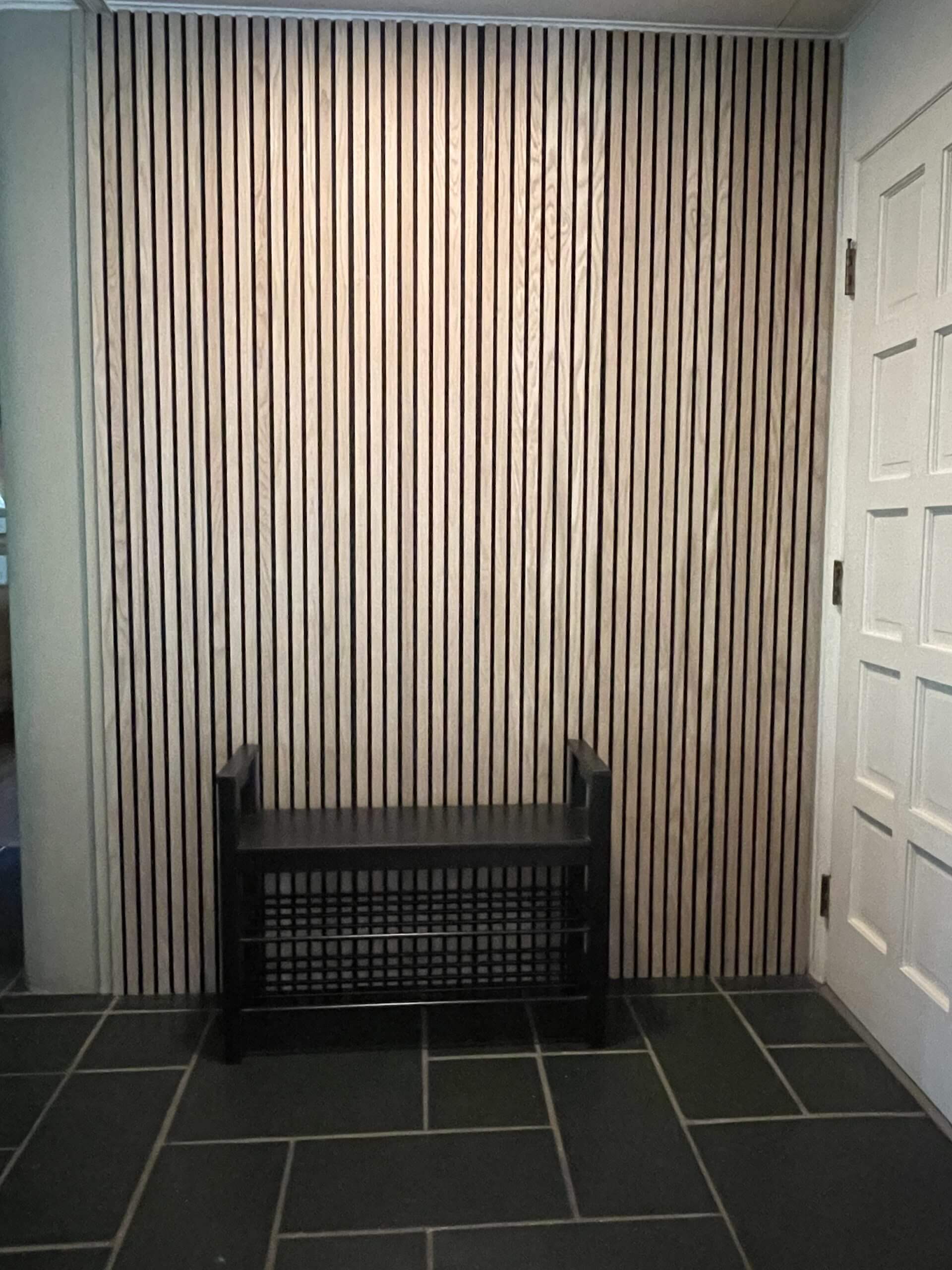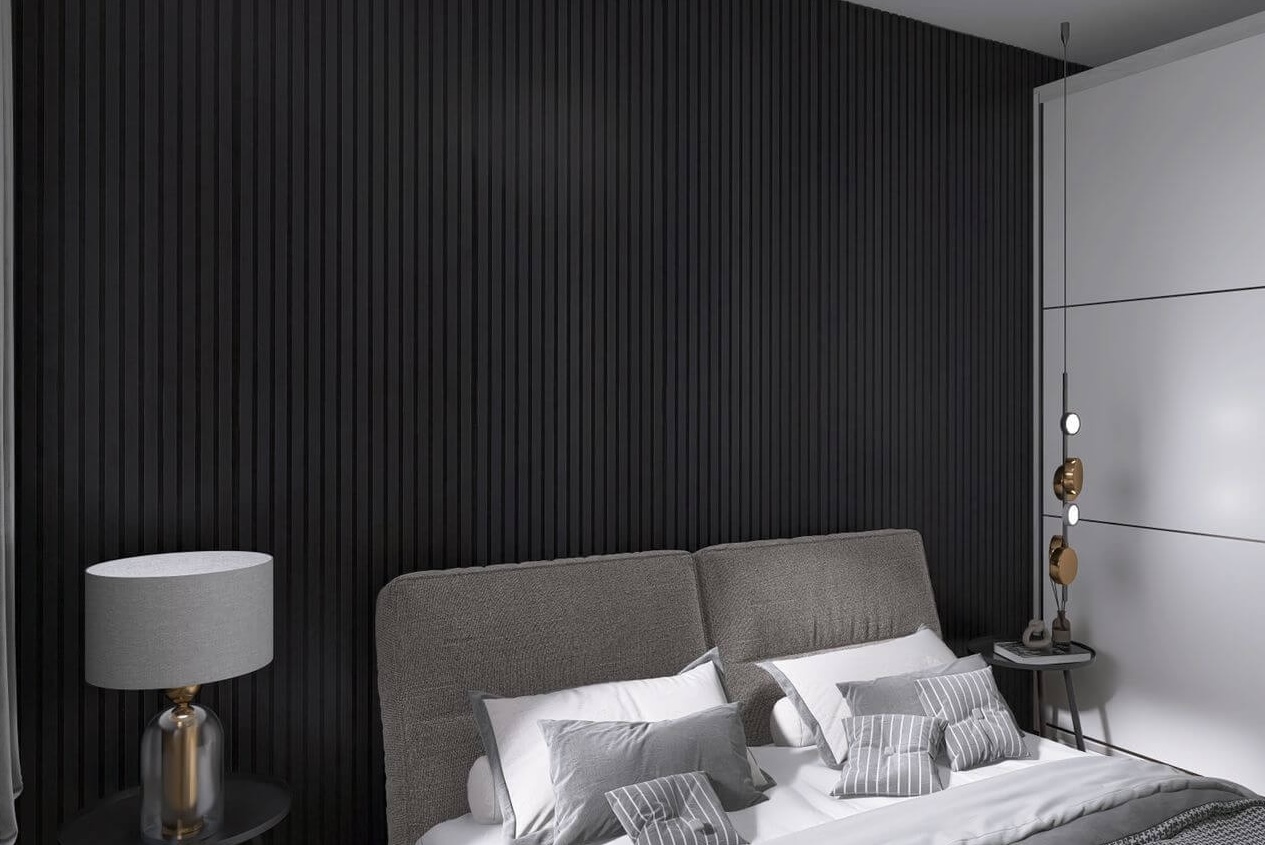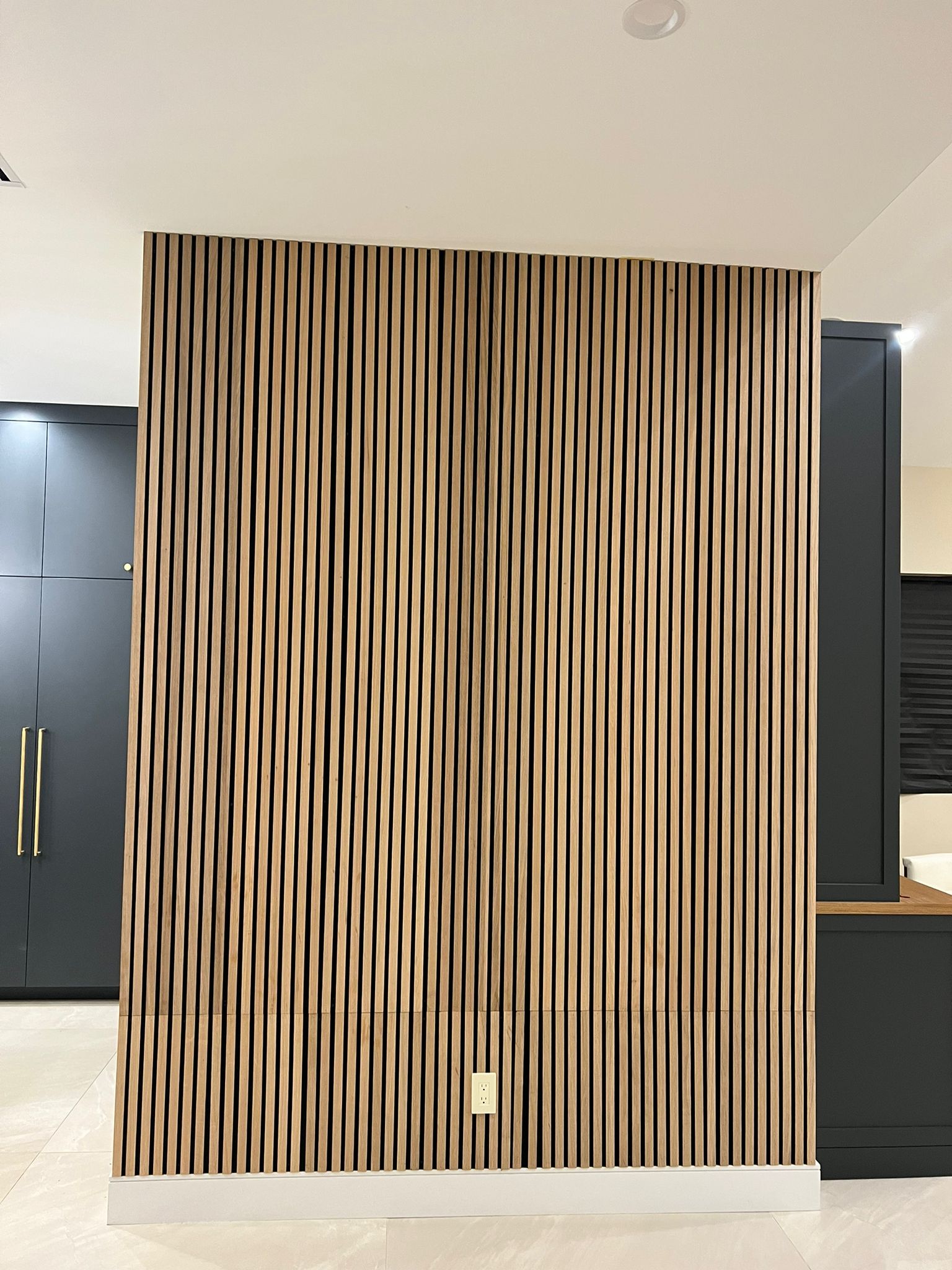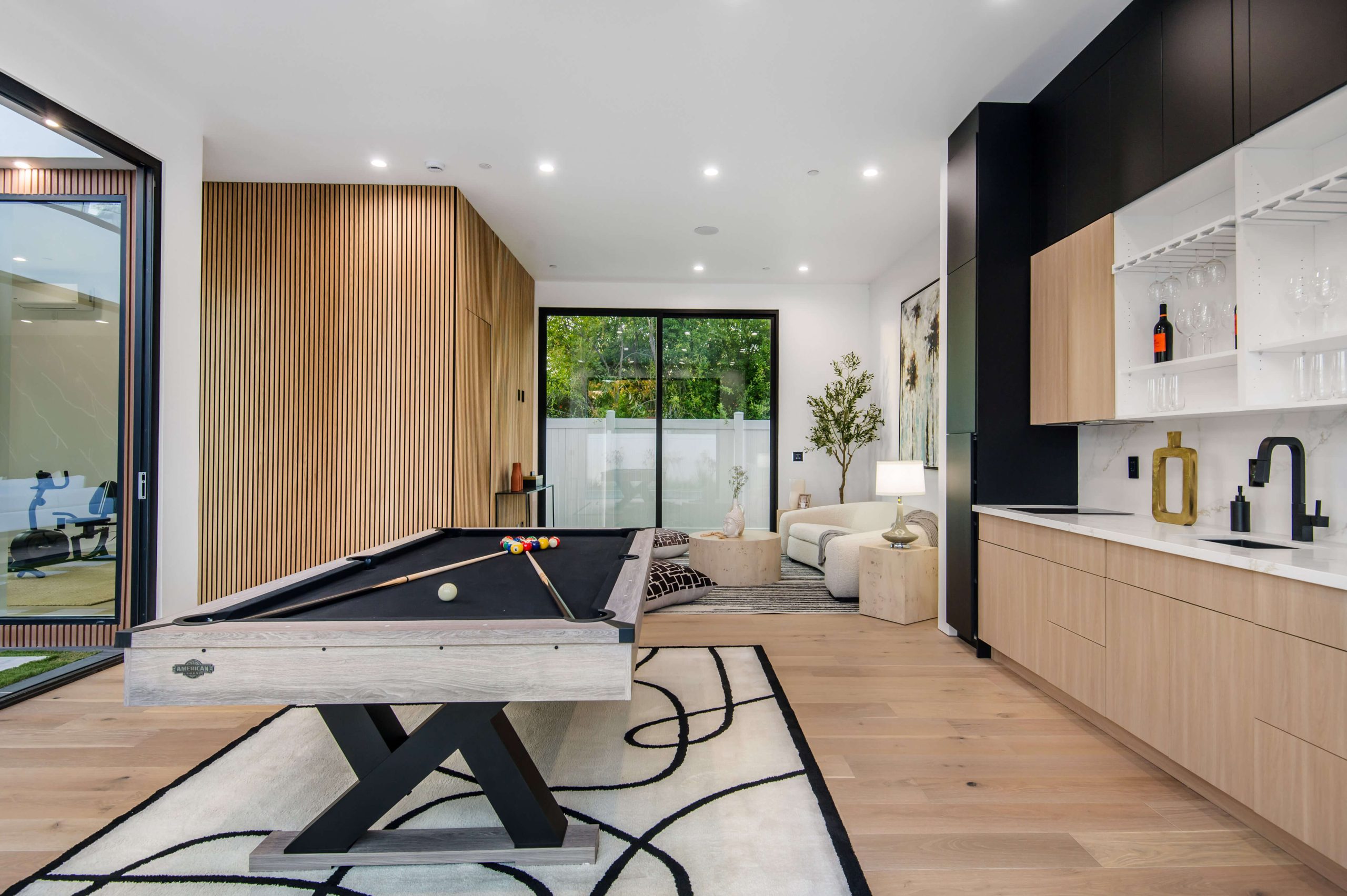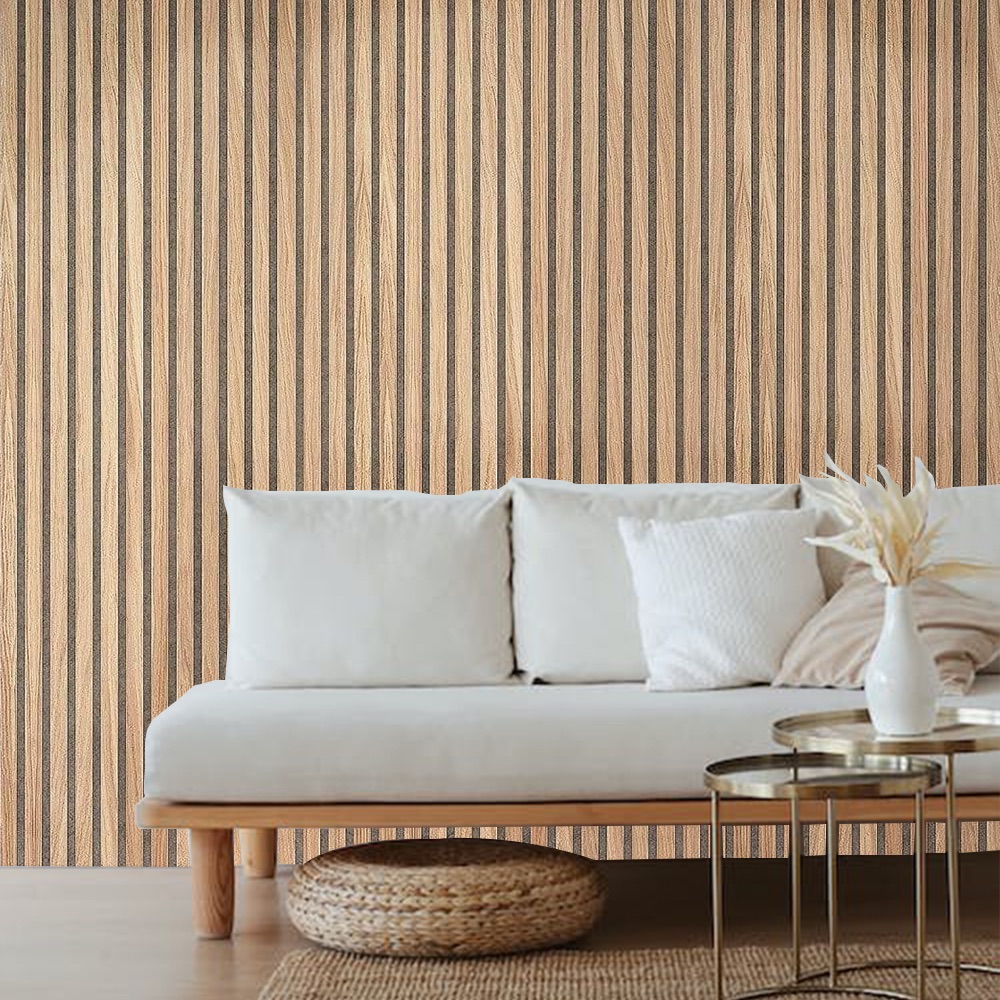When thinking about Wood Panels That Elevate a room, it’s about more than décor—it’s about transforming space into something warm, welcoming, and uniquely yours. With the right wood paneling, you can highlight architectural features, improve acoustics, or set a mood. Let’s explore how wood panels can enhance different room styles and solve common design dilemmas in real, actionable ways.
Wood Panels That Elevate Living Spaces with Warmth and Style
Living rooms are where families gather, guests arrive, and everyday life unfolds. You want comfort, charm, and a touch of style. Wood panels help in three big ways:
- Visual focus: A panel wall behind the sofa or TV creates an intentional backdrop.
- Texture and depth: Slat designs add lines and rhythm; flat planks add modern simplicity.
- Acoustics: Felt-backed or slatted panels absorb sound, perfect for cozy conversations.
For a cozy, sound-friendly living space, try this natural oak acoustic slat wood wall panel for neutral, welcoming tones. It softens echoes and anchors your furniture layout with a tactile, inviting wall style.
Wood Panels That Elevate Bedrooms for Comfort and Calm
A bedroom should feel restful. Here’s how wood panels help:
- Headboard backdrop: They emphasize the bed as the focal point.
- Soft lighting: Panels break up light from lamps, reducing glare.
- Cozy texture: Wood warms the space visually and physically.
Mix in dark tones to create drama—like these natural walnut wood wall panels with a real-oak finish—for an elegant, modern bedroom. Or go minimalist: light-tone oak panels behind soft linens reduce noise and enhance coziness.
Bedroom Wood Panel Styles Comparison
| Style | Mood Created | Best Color Tone | Why It Works |
|---|---|---|---|
| Slatted oak acoustic | Contemporary warmth | Light/neutral | Adds interest and improves sound |
| Solid walnut finish | Modern sophistication | Dark/medium brown | Creates a calming, luxe atmosphere |
| Painted oak grey-felt | Scandinavian calm | Grey-toned oak | Clean, cozy, and soft to the touch |
Wood Panels That Elevate Kitchens with Texture and Function
Kitchens are busy—visually and functionally. Panels can:
- Hide appliances: Cover fridge or pantry with panels that blend in.
- Break up surfaces: They soften tile-heavy backsplashes.
- Resist wear: Properly sealed wood holds up near sinks and counters.
Consider black wood wall panels with real-oak finish for a sleek, upscale kitchen. They’re bold but versatile, especially with brushed metal accents. Felt-backed options are ideal for breakfast nooks, balancing echoes and adding softness to morning routines.
Wood Panels That Elevate Home Offices for Productivity
Your home office needs calm focus and visual interest. Wood panels deliver:
- Sound control: Reduces background noise from neighbors or appliances.
- Visual warmth: Makes Zoom calls look richer and more personal.
- Defined areas: Panels can delineate workspace from living zones.
For a simple, effective upgrade, go with these oak-grey felt panels designed for both sound and style—they combine wood’s appeal with soft sound absorption and neutral tones that keep you centered and productive.
Wood Panels That Elevate Accent Walls and Unify Rooms
Accent walls bring personality, drama, or cohesion. Wood panels can be the perfect canvas:
- Choose the wall—behind a fireplace, a bed, or in a hallway.
- Pick a style—striped slats, flat planks, or geometric panels.
- Anchor with color—contrasting hues draw attention; matching tones blend softly.
For inspiration and installation ideas, this walkthrough on how blank walls can come to life with wood paneling shows how to treat walls as design statements, using panels to transform bland surfaces into beautiful focal points.
Accent Wall Ideas
- Wide plank oak behind a mantel: Rustic elegance meets modern clean lines.
- Slatted walnut behind a console table: Warmth with vertical rhythm.
- Grey felt panels in a hallway: Quiet, soft, and sophisticated.
Practical Considerations for Using Wood Panels That Elevate
Choosing wood panels is easy; installing them so they truly elevate your space takes thought:
Material Selection
- Oak offers consistent grain and color, ideal for modern or Scandinavian styles.
- Walnut brings richness and depth, perfect for traditional or moody themes.
- Felt-backed panels combine style with acoustic performance.
Installation Tips
- Check wall straightness—use shims when needed.
- Leave small expansion gaps to prevent buckling.
- Opt for tongue-and-groove or clip systems for easier assembly and cleaner look.
Finishing and Care
- Seal panels in moisture-prone zones (bathrooms, kitchens).
- Wipe dust with a damp cloth; avoid harsh chemicals.
- Refinish or reseal every few years to maintain protective luster.
How to Choose Panels That Meet Your Room’s Needs
Here’s a step-by-step checklist to help pick panels that truly elevate your space:
- Identify your goal: acoustic control, warmth, visual focus, or wear resistance?
- Select tone: light oak cozies small rooms; dark walnut adds elegance; grey adds neutrality.
- Decide texture:
- Flat planks = simple, minimal.
- Slats = dimension, vertical emphasis.
- Felt-backed = acoustic plus softness.
- Think maintenance: high gloss shows dust; matte hides fingerprints.
- Match panel style to décor: modern, rustic, minimalist, or classic.
Bringing It All Together
- Fresh-looking living room? Start with slatted oak acoustic panels.
- Want a calmer bedroom? Try dark walnut panels behind your bed.
- Need kitchen durability? Go with darker oak sealed panels.
- Home office distractions? Grey-felt panels will improve both looks and focus.
- Boring hallway? Accent it with texture-rich wood panels.
Every room has its own needs—and the right wood panels meet those needs while also making a stylish statement.
Wood panels are more than wall coverings—they’re tools you can use to shape mood, improve acoustics, and bring texture. Whether you aim for cozy, bold, or sleek, the right wood panel is the starting point for a transformed space. Choose the variety that fits your vision—acoustic, walnut, grey, or classic oak—and you’ll see immediate improvement in how your room looks, feels, and functions.
FAQs
1. How do I choose the right wood panel style for my room?
Start by considering your room’s purpose. For a cozy, quiet space like a bedroom, go with felt-backed or slatted acoustic panels. For bold design in kitchens or entryways, darker or high-contrast wood works best. Always match your panel tone and texture to the mood you want—light oak for airy feels, walnut for sophistication, or grey felt for modern calm.
2. Can wood panels help with soundproofing in my home office or living room?
Yes! Acoustic slat panels and felt-backed designs can significantly reduce noise. These are ideal for home offices, media rooms, or open-plan living areas where sound control enhances comfort and focus.
3. Are wood wall panels easy to install on my own?
Many modern wood panels come with user-friendly installation systems like tongue-and-groove or clip mounts. If your walls are straight and you’re handy with basic tools, DIY is very possible. For best results, ensure proper alignment and leave small expansion gaps.
4. Will wood panels work in humid areas like kitchens or bathrooms?
Absolutely—just make sure to choose sealed or treated panels. Wood naturally reacts to moisture, so proper sealing and ventilation are key. Avoid placing them directly where water splashes, like behind sinks or bathtubs.
5. How do I clean and maintain wood wall panels long-term?
Wipe them regularly with a soft, damp cloth—no harsh chemicals needed. For felt or acoustic panels, use a vacuum with a soft brush. Reseal natural wood panels every few years to keep them looking fresh and protected.


